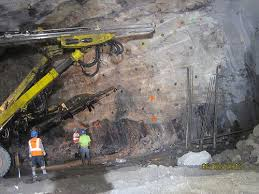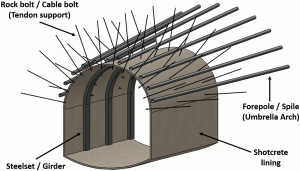Using HD-FOS for Safer, More Stable Excavations and Tunnels
Tunnels and other underground excavations typically require some form of ground support or reinforcement to increase the stability of the excavation and improve safety. This support system often takes the form of a combination of support components, such as rock bolts, tendons, umbrella arches and forepoles.

Monitoring these ground support components could potentially provide valuable information in assessing the performance of the support system, as well as detecting ground movement around the excavation. Unfortunately, traditional monitoring approaches have provided only very coarse data and limited insight. Therefore, a research team at the Geological Sciences and Geological Engineering Department at Queens University is investigating and developing the use of distributed fiber optic sensing to provide high-resolution data on the forces applied to installed support members (bolt, tendon, etc.).

The team evaluated multiple fiber optic sensing technologies, and concluded that fiber optic sensing based on the Rayleigh backscatter mechanism and measured using OFDR techniques, otherwise known as high-definition fiber optic sensing (HD-FOS), provided the best combination of capabilities for this application. In particular, the low cost of HD-FOS sensors and the their sub-millimeter resolution, which opens up the ability to both capture and identify local and micro-scale ground support phenomena, were deemed as the most important advantages.
The research team evaluated and verified the performance of standard HD-FOS sensors directly coupled to ground support components in multiple tests using Luna’s ODiSI measurement system for HD-FOS. You can read all the details of the team's work and conclusions in the paper “The Application of Distributed Optical Strain Sensing to Measure the Strain Distribution of Ground Support Members” available online here.